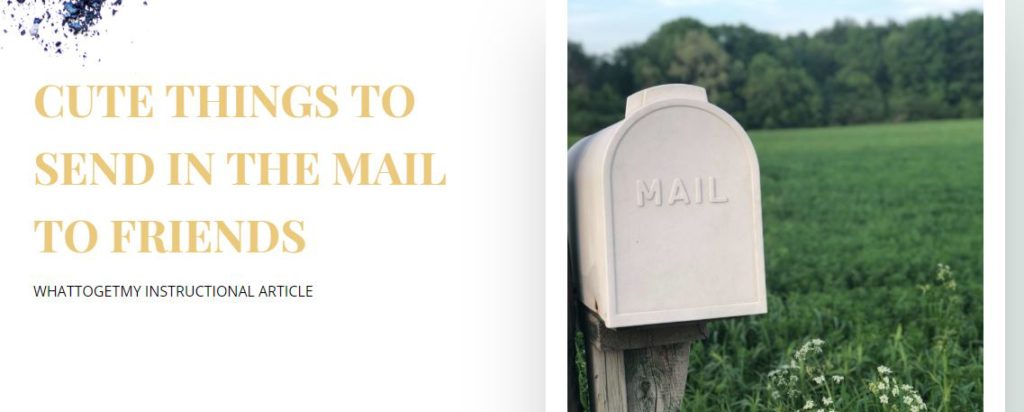Mindfulness in Time Management: Cultivating Present-Moment Awareness
Have you found yourself juggling tasks, overwhelmed by deadlines, and feeling like there’s never enough time in a day?
This instructional article will delve into the fascinating realm of mindfulness in time management.
Mindfulness in time management enhances our ability to focus and concentrate on the task.
Mindful breathing exercises are a powerful tool for cultivating present-moment awareness in time management.
Research has shown that practicing mindfulness in the workplace can enhance productivity, creativity, and overall job satisfaction.
I. Introduction
Have you found yourself juggling tasks, overwhelmed by deadlines, and feeling like there’s never enough time in a day? What if I told you that there’s a powerful approach that can transform your time management skills and bring calm and focus to your hectic schedule? Welcome to the world of mindfulness in time management!
B. The concept of mindfulness in time management
Rooted in ancient traditions, mindfulness has gained significant popularity for reducing stress and enhancing well-being. Mindfulness in time management involves cultivating present-moment awareness and directing our attention to the task. It’s about being fully engaged in the current moment rather than distracted by thoughts about the past or future.
C. Exploring the benefits and techniques of cultivating present-moment awareness for effective time management
This instructional article will delve into the fascinating realm of mindfulness in time management. We will explore the many benefits of incorporating present-moment awareness into our approach to time, and we will provide you with practical techniques that can help you cultivate mindfulness in your daily life. By the end of this article, you’ll be equipped with valuable insights and actionable strategies to enhance your time management skills, reduce stress, and find a greater sense of balance in your busy schedule.
With this introduction, we’ve set the stage for the importance of mindfulness in time management and captured the readers’ attention. The thesis statement clearly outlines the article’s purpose: to examine the benefits of present-moment awareness and provide practical techniques for effective time management.
II. Understanding Mindfulness in Time Management
A. Mindfulness in the context of time management
In time management, mindfulness directs our attention to the present moment without judgment or attachment. It involves being fully aware of our thoughts, emotions, and sensations as we engage in tasks and activities related to managing our time. It’s about focusing on the present, not being caught up in regrets or anxieties about the past or future. Developing present-moment awareness in time management can enhance productivity and foster a greater sense of focus and clarity in your daily tasks.
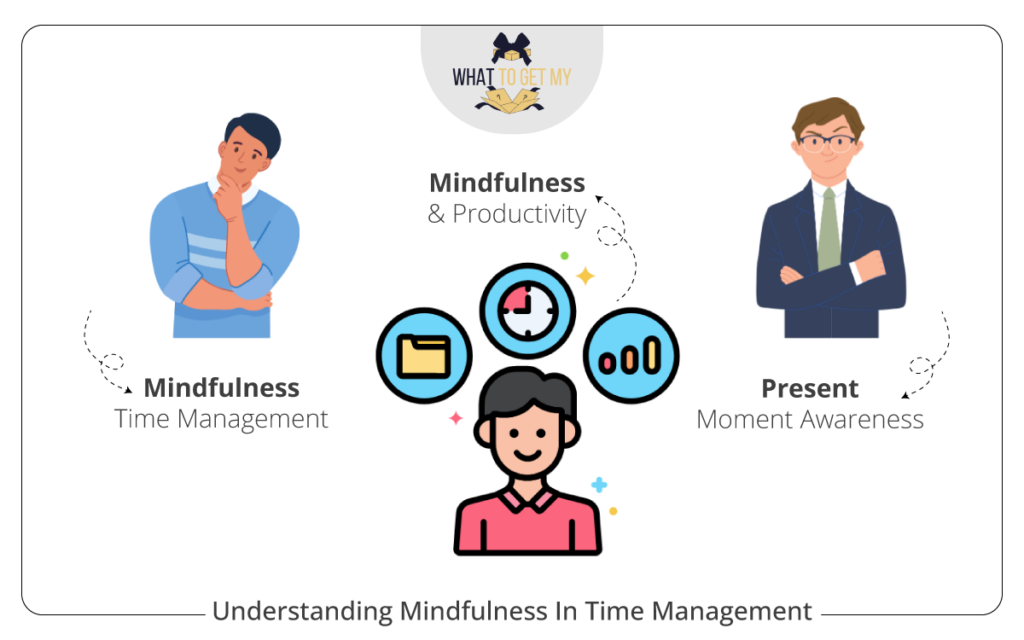
B. The importance of present-moment awareness in managing time effectively
Present-moment awareness is crucial for effective time management because it allows us to make the most of each moment. When fully present and engaged in the task, we can give it our undivided attention and perform it more efficiently and effectively. By being mindful of the present moment, we can better prioritize our tasks, make informed decisions, and allocate our time and energy in alignment with our goals and values.
C. The connection between mindfulness and productivity:
Mindfulness and productivity are closely intertwined. When we cultivate present-moment awareness, we become more attuned to our mental and emotional states, which enables us to recognize and manage distractions more effectively. By being mindful, we can reduce the tendency to multitask, which often leads to decreased productivity and increased errors. Moreover, mindfulness helps us develop a more profound sense of focus and concentration, allowing us to work with greater clarity and efficiency. Research has shown that practicing mindfulness in the workplace can enhance productivity, creativity, and overall job satisfaction. By cultivating mindfulness for better time management, you can cultivate a more profound sense of presence and purpose in your daily activities, leading to improved focus, reduced stress, and more effective time use.
In this section, we clearly defined mindfulness in time management and highlighted the significance of present-moment awareness for effective time management. Additionally, we’ve established the connection between mindfulness and productivity, emphasizing how cultivating mindfulness can positively impact one’s ability to manage time efficiently.
The Meditation Apps segment will generate approximately US$1.36 billion in 2023. It is projected to experience a compound annual growth rate (CAGR) of 11.98% from 2023 to 2027, leading to a market volume of around US$2.13 billion by 2027, according to Statista.
III. Benefits of Mindfulness in Time Management
A. Increased focus and concentration
Mindfulness in time management enhances our ability to focus and concentrate on the task. By training our attention to remain present at the moment, we can minimize distractions and maintain a higher level of focus. This heightened focus allows us to complete tasks more efficiently and accurately. Incorporating mindfulness practices for effective time management allows you to cultivate a heightened awareness and intentionality, empowering you to make conscious choices and optimize your productivity throughout the day.
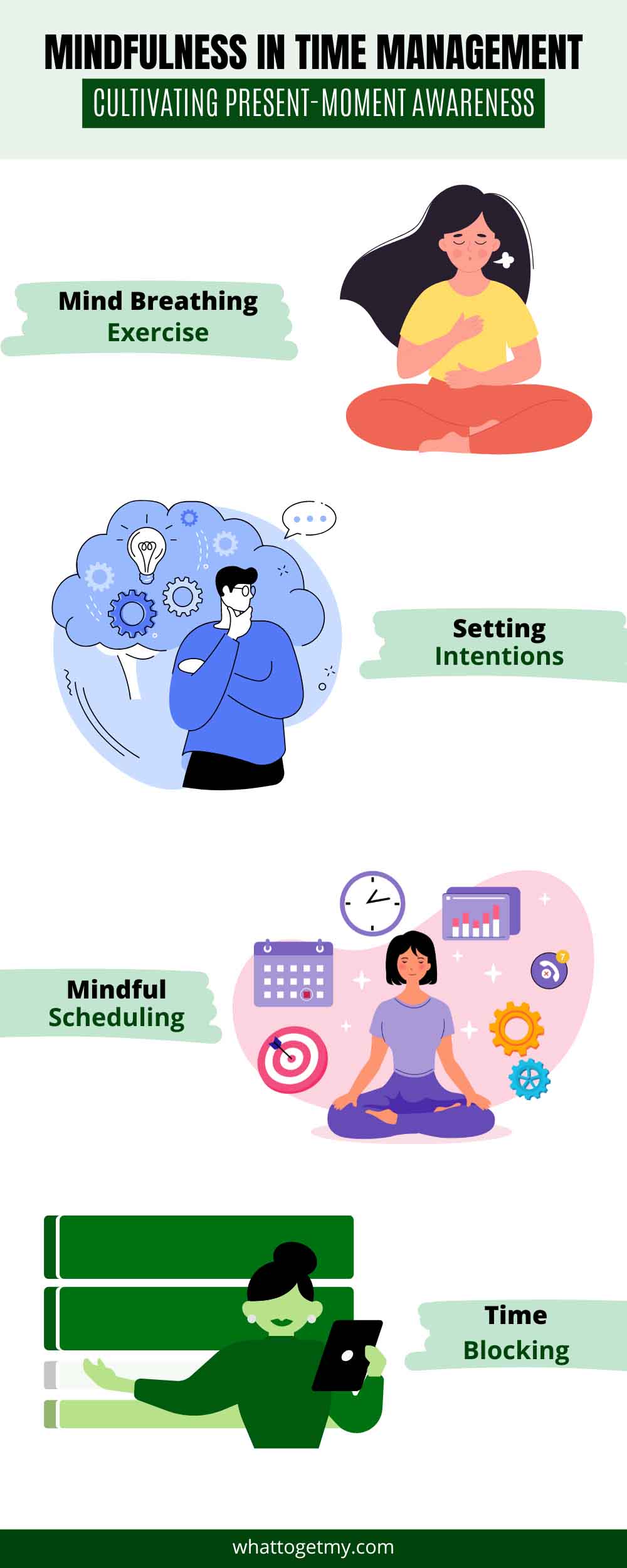
B. Reduced stress and overwhelm
Mindfulness helps us manage stress and alleviate overwhelming feelings associated with time constraints. By staying present and accepting the current moment without judgment, we can cultivate a sense of calm and reduce anxiety. Mindfulness enables us to approach our tasks with a more precise and relaxed mindset, leading to a reduction in stress levels.
C. Improved decision-making and prioritization
When we practice mindfulness in time management, we develop the ability to make decisions and prioritize tasks more effectively. By being fully present, we can assess each task’s importance and urgency, enabling us to allocate our time and resources accordingly. Mindfulness allows us to make decisions more clearly, considering both short-term and long-term implications. Incorporating present-moment awareness in time management enables you to engage with each task fully, make informed decisions, and prioritize effectively, resulting in a more balanced and fulfilling approach to managing your time.
D. Enhanced work-life balance
Mindfulness in time management promotes a healthier work-life balance by helping us establish boundaries and prioritize self-care. When mindful of our time and energy, we can consciously allocate it to work-related tasks and personal activities. By cultivating present-moment awareness, we become more attuned to our well-being, creating a balance between our professional and personal lives.
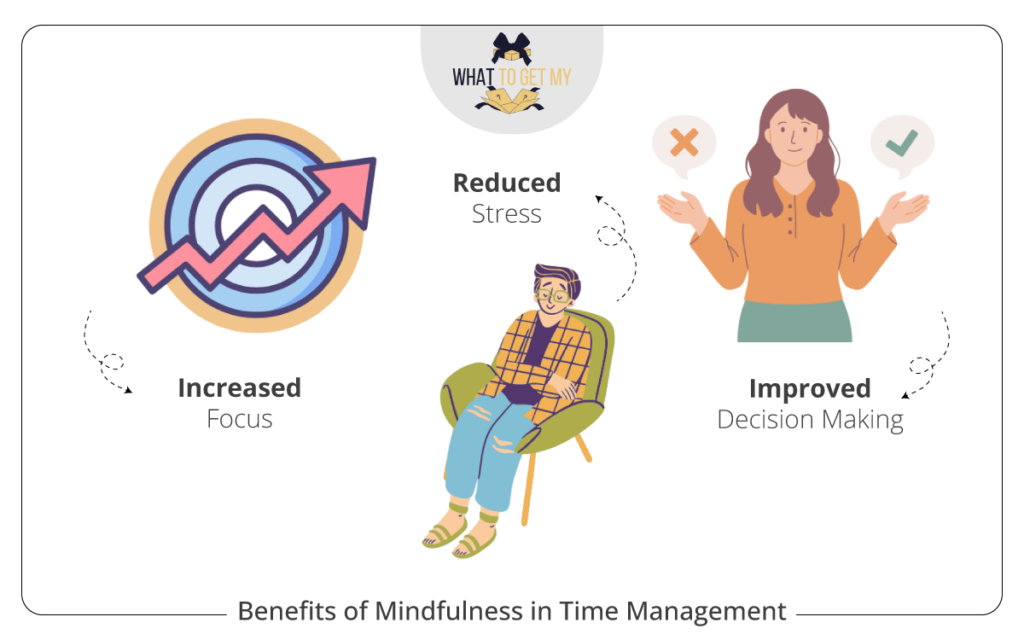
E. Research on Mindfulness
Numerous studies have demonstrated the benefits of mindfulness in time management. For example, a study published in the Journal of Occupational Health Psychology found that mindfulness practices significantly increased employees’ ability to focus, leading to enhanced productivity. Additionally, research conducted by the American Psychological Association has shown that mindfulness-based interventions can reduce stress levels and improve decision-making skills.
IV. Techniques for Cultivating Present-Moment Awareness in Time Management
A. Mindful breathing exercises
Mindful breathing exercises are a powerful tool for cultivating present-moment awareness in time management. Focusing on our breath anchors us in the present moment and enhances our ability to stay attentive. Take a few moments throughout the day to engage in deep, conscious breathing. Pay attention to the sensation of the breath entering and leaving your body, letting go of any distractions and bringing your focus back to the present.
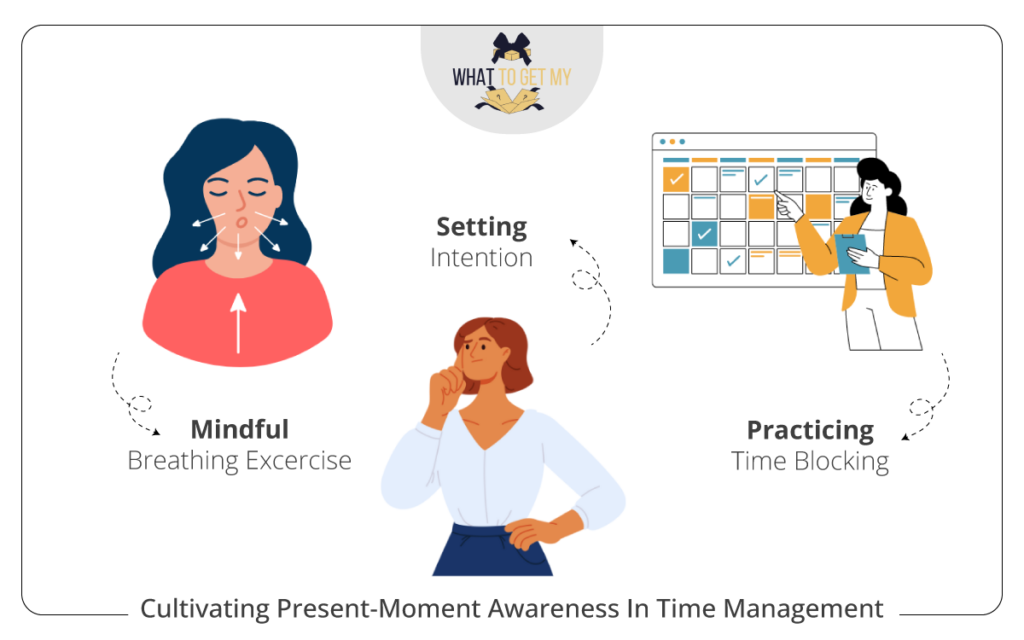
B. Setting intentions and goals mindfully
When setting intentions and goals for your time management, approach them mindfully. Take a moment to reflect on your values and priorities and set intentions aligned with them. Be specific and realistic in your goal-setting, ensuring your goals are achievable within the time frame. By setting intentions mindfully, you bring clarity to your time management practices.
C. Practicing mindful scheduling and time blocking
Mindful scheduling involves allocating specific blocks of time for different tasks and activities. Prioritize important tasks and assign them dedicated time slots, considering your energy levels and concentration. When engaging in a particular task, commit fully to it, avoiding multitasking and distractions. Practicing mindful scheduling and time blocking creates a structured framework that promotes present-moment awareness and effective time management.
D. Utilizing mindfulness apps and tools:
In the digital age, numerous mindfulness apps and tools can support your journey of cultivating present-moment awareness. These apps offer guided meditations, breathing exercises, and reminders to help you stay focused and mindful throughout the day. Explore popular mindfulness apps such as Headspace, Calm, or Insight Timer, and integrate them into your time management routine for added support.
E. Integrating mindfulness breaks and micro-meditations into the workday:
Incorporating short mindfulness breaks and micro-meditations into your workday can profoundly impact your ability to stay present and manage your time effectively. Set aside brief moments of stillness and silence between tasks to reset your focus and recharge. Engage in quick mindfulness practices, such as a one-minute breathing exercise or a mindful walk, to bring awareness to the present moment and refresh your mental state.
By implementing these techniques for cultivating present-moment awareness in time management, you can enhance your ability to stay focused, make conscious choices, and optimize your time use. Mindful productivity and time management go hand in hand, as being fully present and attentive to the task at hand allows you to maximize your efficiency, minimize distractions, and achieve a greater sense of accomplishment in your daily endeavors. Experiment with these techniques and find the ones that resonate with you, incorporating them into your daily routine to foster a more mindful approach to managing your time.
V. Incorporating Mindfulness into Time Management Strategies
A. Mindful task prioritization and delegation:
When practicing mindfulness in time management, it’s essential to prioritize tasks mindfully. Step back and evaluate each task’s importance, urgency, and alignment with your goals. Consider your available time and energy, and allocate them accordingly. Additionally, practice mindful delegation by recognizing tasks that can be assigned to others, allowing you to focus on high-priority activities and make the most of your time.

B. Mindful multitasking vs. single-tasking:
Mindfulness encourages us to shift from the habit of multitasking to the practice of single-tasking. Instead of juggling multiple tasks simultaneously, focus on one task at a time. Fully engage in that task, bringing your complete attention and presence to it. This approach enhances concentration, reduces errors, and allows you to complete tasks more efficiently. Mindful single-tasking fosters a more profound sense of engagement and productivity.
C. Mindful use of technology and digital distractions:
In today’s digital age, it’s crucial to approach technology mindfully when managing your time. Be conscious of the potential distractions and time sinks from social media, emails, and other digital platforms. Set boundaries by designating specific times to check notifications and limit unnecessary screen time. Create technology-free zones or periods to foster focused attention and minimize distractions, enabling you to make the most of your time.
D. Mindful reflection and evaluation of time usage:
Regular reflection and evaluation of how you utilize your time are integral to mindfulness in time management. Set aside dedicated moments to review your daily, weekly, or monthly time usage. Reflect on how effectively you managed your time, whether your priorities were aligned, and areas where improvement is needed. This mindful evaluation allows you to adjust, learn from past experiences, and continually refine your time management strategies.
By incorporating mindfulness into these time management strategies, you cultivate a more intentional and conscious approach to prioritizing tasks, handling distractions, and evaluating your time usage. Mindful task prioritization and delegation ensure that your efforts are directed toward meaningful and impactful activities. Embracing single-tasking over multitasking fosters focus and efficiency. Mindful use of technology helps you navigate digital distractions effectively. Lastly, regular reflection and evaluation empower you to make informed adjustments for continuous improvement in managing your time mindfully. Implementing mindfulness techniques for improved time management empowers you to harness the power of present-moment awareness, prioritize tasks effectively, maintain focus amidst distractions, and make conscious choices that optimize your productivity and overall time management.
VI. Applying Mindfulness Practices for Improved Time Management
A. Morning mindfulness routines for setting the tone:
Starting your day with a mindful routine can significantly impact your time management. Incorporate mindfulness practices such as meditation, gentle stretching, or journaling into your morning routine. By taking time to ground yourself and cultivate a calm and focused mindset, you set the tone for the rest of the day. This mindfulness practice lets you approach your tasks and activities intentionally and clearly, enhancing your overall time management.
B. Mindful transitions between tasks and activities:
Mindful transitions are crucial in maintaining focus and efficiency throughout your day. Before moving from one task to another, take a few moments to pause, breathe, and mentally let go of the previous task. Bring your attention to the present moment and intentionally shift your focus to the upcoming task. This mindful transition lets you approach each new task with a fresh perspective, minimizing carry-over distractions and maximizing productivity.

C. Mindfulness in meetings and collaborations:
Mindfulness can significantly enhance the effectiveness of meetings and collaborations. Before the meeting begins, take a moment to ground yourself and set an intention to be fully present and engaged. During the meeting, practice active listening by giving complete attention to the speaker and refraining from judgment or distraction. Cultivate an open and curious mindset, fostering effective communication and collaboration. Bringing mindfulness to meetings can improve time management by ensuring productive and focused discussions.
D. Mindful time management for personal projects and goals:
Mindfulness can be particularly beneficial when managing personal projects and goals. Start by setting clear and realistic objectives, ensuring they align with your values and aspirations. Break down larger projects into smaller, manageable tasks, and approach each with focused attention and presence. Regularly check in with yourself, reflect on your progress, and adjust your plan as needed. By applying mindfulness to personal projects and goals, you stay connected to your priorities, maintain motivation, and progress steadily.
By incorporating mindfulness practices into these areas of time management, you can cultivate a more mindful and intentional approach to your daily routine. Morning mindfulness routines set a positive tone for the day, mindful transitions foster focus and productivity, mindfulness in meetings enhances collaboration, and applying mindfulness to personal projects and goals keeps you aligned with your aspirations. Embrace these practices to optimize your time management and bring a sense of presence and purpose to each aspect of your day.
Ⅶ. Frequently Asked Questions:
Q1: How long does it take to see the benefits of mindfulness in time management?
A1: The time it takes to see the benefits of mindfulness in time management can vary from person to person. Some individuals may notice positive changes in focus, stress levels, and decision-making skills relatively quickly within a few weeks of consistent practice. However, it is essential to remember that mindfulness is a skill that develops over time. It requires patience and regular practice to fully integrate mindfulness into your time management routine and experience its long-term benefits.
Q2: Can mindfulness help with multitasking?
A2: While multitasking may seem like a way to get more done in less time, research has shown that it can decrease productivity and increase errors. Mindfulness encourages a shift from multitasking to single-tasking, where you focus on one task at a time with full attention and presence. By practicing mindfulness in time management and engaging in single-tasking, you can enhance your focus, improve the quality of your work, and achieve better time management outcomes.
Q3: Can mindfulness in time management improve work-life balance?
A3: Yes, mindfulness in time management can contribute to improved work-life balance. You become more attuned to your priorities, needs, and boundaries by cultivating present-moment awareness. This awareness allows you to allocate your time and energy more consciously, ensuring you create space for work-related tasks and personal activities. Mindfulness helps you establish boundaries, manage stress, and make deliberate choices that promote a healthier balance between your professional and personal life.
Remember, these answers provide general guidance and the benefits and experiences of mindfulness in time management can vary among individuals. Exploring and experimenting with mindfulness techniques that resonate with you and adapting them to your unique circumstances and preferences is essential.
Ⅷ. Conclusion
A. Recap of the key points discussed in the article:
Throughout this article, we have explored the concept of mindfulness in time management and its impact on our ability to utilize our time effectively. We discussed the definition of mindfulness in the context of time management and highlighted its benefits, including increased focus, reduced stress, improved decision-making, and enhanced work-life balance. We explored various techniques for cultivating present-moment awareness, such as mindful breathing exercises, setting intentions mindfully, practicing mindful scheduling, utilizing mindfulness apps, and integrating mindfulness breaks into the workday. We also examined how mindfulness can be incorporated into time management strategies, including task prioritization, single-tasking, managing digital distractions, and reflecting on time usage.
B. The importance of mindfulness in time management
Mindfulness in time management is not just a passing trend and approach that can transform how we navigate our busy lives. By cultivating present-moment awareness, we can enhance our focus, reduce stress, make informed decisions, and create a more excellent balance in our daily routines. Mindfulness allows us to approach time management with intention, purpose, and clarity, enabling us to make the most of each moment.
C. Start implementing mindfulness techniques for better time management
Now that you have gained insights into the benefits and techniques of mindfulness in time management, it’s time to take action. Begin incorporating mindfulness practices into your daily routine. Start with small steps, such as practicing mindful breathing exercises or setting intentions mindfully. Gradually integrate mindfulness into your time management, embracing mindful transitions, mindful meetings, and mindful approaches to personal projects and goals. By taking these steps, you can experience the transformative effects of mindfulness in your own life.
D. Closing thoughts or call to action:
Remember, mindfulness in time management is a journey that requires consistent practice and commitment. Embrace the present moment, let go of distractions, and consciously choose how you spend your time. As you continue on this path, observe its positive impact on your productivity, well-being, and overall quality of life. Embrace the power of mindfulness in time management and unlock your potential to create a balanced, fulfilling, and meaningful life.
Take the first step today and implement mindfulness techniques in your time management practices. Embrace the gift of the present moment and watch as your productivity, focus, and overall well-being soar to new heights.
02 HOURS 41 MINUTES
ESTIMATED TIME DESIGNING AND UPLOADING THIS ARTICLE
08 HOURS 16 MINUTES
ESTIMATED TIME RESEARCHING AND WRITING THIS ARTICLE
LOOKING FOR MORE GIFTS?
Try our AMAZING GIFT FINDER TOOL! Find GIFTS with 1 CLICK!
LOOKING FOR MORE GIFTS?
Try our AMAZING GIFT FINDER TOOL! Find GIFTS with 1 CLICK!
LOOKING FOR MORE GIFTS?
Try our AMAZING GIFT FINDER TOOL! Find GIFTS with 1 CLICK!
You Might Also Like

Should I Get a Divorce? 25 Big Questions to Ask Yourself.
Should I Get a Divorce? 25 Big Questions to Ask Yourself. WhatToGetMy Instructional Article When you reach the point in your marriage where you are actually flirting with the idea of getting a divorce, then things must be pretty bad. However, taking the easy way

Fun Home Activities for Couples
Fun Home Activities for Couples WhatToGetMy Instructional Article Couples in long term relationships are often stuck in a routine. That’s why you’re probably looking for some great home activities for couples and you came to the right place. We’ve searched for activities that can break

25 Things to Say to Scare Someone
25 THINGS TO SAY TO SCARE SOMEONE WhatToGetMy Instructional Article There are many things to say to scare someone as a prank or a good-willed Halloween joke. But out of the many, this article has selected 25 of the best to create a great catalog

Financial Things to Do After Getting Married
8 Financial Things to Do After Getting Married WhatToGetMy Instructional Article So, you’re looking for financial tips for newly married couples. You’re lucky because we have all that you need in one place. We know how planning a new life can be challenging. It’s just

If you have a passionate paddle boarder in your life, you have to think twice before you give her or him a gift. This caution doesn’t have anything to do with the occasion but rather the hobby itself. You want to get something to complement

19 Essential Gifts For Guys Who Drive A Lot.
This article is for you if: ➦ You are a guy who drives a lot for work or just drive a lot generally; ➦ You are a guy who loves to spend a lot of time in his car; ➦ You are a guy who

Fun Things to Do With 1000 Dollars
Fun Things to Do With 1000 Dollars WhatToGetMy Instructional Article Do you have a thousand dollars to blow up and are you wondering what cool things to spend your money on? This is the article for you. They say “all work and no play makes

GIFTS FOR MUSICAL THEATER LOVERS
Do You want to surprise someone special in your life who is a huge fan of Musical theaters? If yes, then you must be trying to find ideas for gifts for musical theater lovers. Even if you could never seem to really understand what all

Secret Santa Gift Ideas for Managers
Being a secret Santa is sometimes really stressful. Nobody will know what you got, that’s true, but you will! How are you supposed to live with yourself knowing that you gave a wrong gift to somebody? As if things couldn’t be any worse, you pulled

9 Good One-Month Anniversary Gifts for Her
Looking for 1st-month anniversary gifts for women can be quite challenging because you are not sure of what they like or dislike yet when it comes to material items. If you don’t want to miss on the gift, you can always ask your significant other


